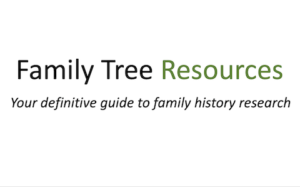As you progress with your research, recording family history should become an integral part of your process, and you should choose a system that is easy for you, and others, to understand.
There are many ways you can organise your genealogical research, such as using a filing system or computer program and making notes using a family tree chart. These systems help you identify what research you have undertaken and allow you to easily show your research to other people.
Over the years, I have tried many different ways of organising my family history research, which I have mentioned in detail in this page.
Use a Family History Chart to Document Your Research
Although there are many computer software programs and other digital tools available these days, sometimes you find whilst conducting family history research that the easiest way to document your research is to use a family history chart and good old pencil and paper to make notes.
It is awfully easy to become confused by all the details you have found about your ancestors (I know I have!!) and placing all the information you uncover in a family history chart and making notes of the sources you have used will help you to make sense of this new information.
Using a family tree chart will help you identify gaps in your research, so you know which avenues to explore next.
You can also see what point your research has reached so can easily pick up where you left off, and do not waste time researching lines you have already researched, and/or peruse sources you have already utilised.
If you wish to give your research to someone else as a gift, you can easily transfer the information from the working copy of the chart to the final version and make a unique gift that the other person will treasure.
Family Tree Charts are a very useful tool whether you are a beginner or an experienced researcher. I only wish they had been around when I started conducting my own research 20 years ago – they certainly would have made my life so much easier!!
How to Organise Genealogy Research With a Filing System
It is important to keep records safe when recording family history, and not have too many loose sheets of paper that could be inadvertently lost or destroyed. You could divide your file into different sections, and have a section for each type of resource.
For example you may have birth, marriage and death certificates in one section, extracts from census returns in a second, church records of baptisms, marriages and burials in a third, and then any other sections for other types of documents you may discover, such as military records.
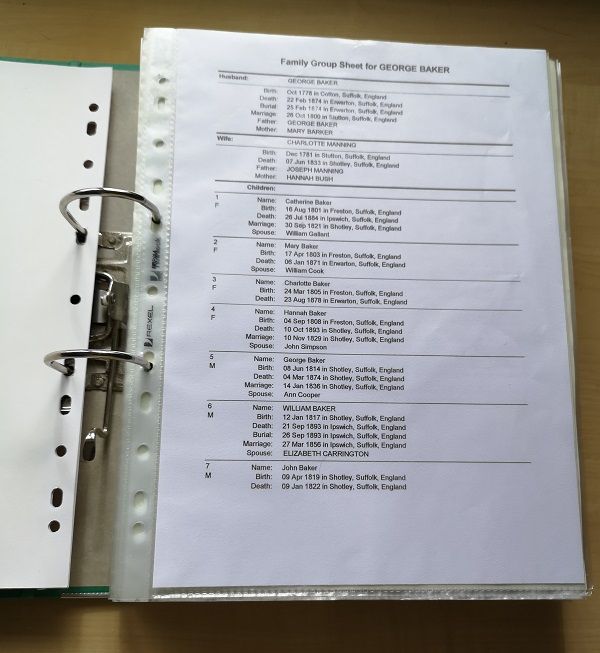
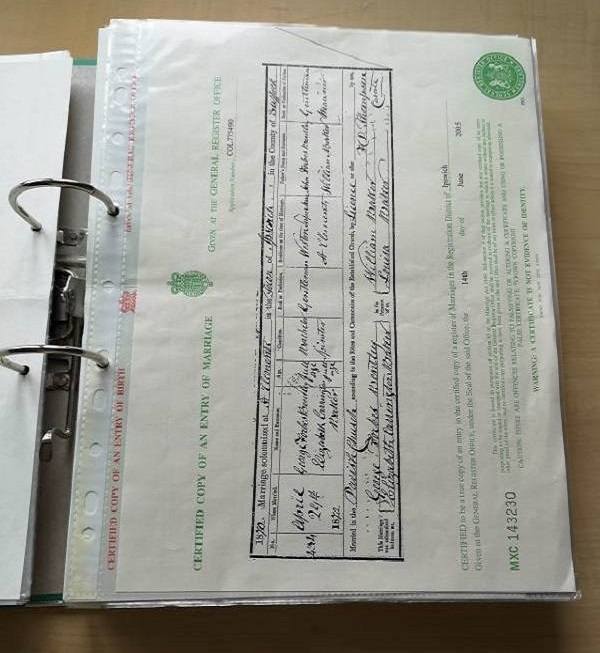
You could use one file per family, so you know where to find your information regarding each family.
Each file may contain family group sheets, pedigree charts or bow-tie family trees, genealogy research logs and photocopies of documents, and could start with the oldest ancestor, gradually moving forward with each new generation.
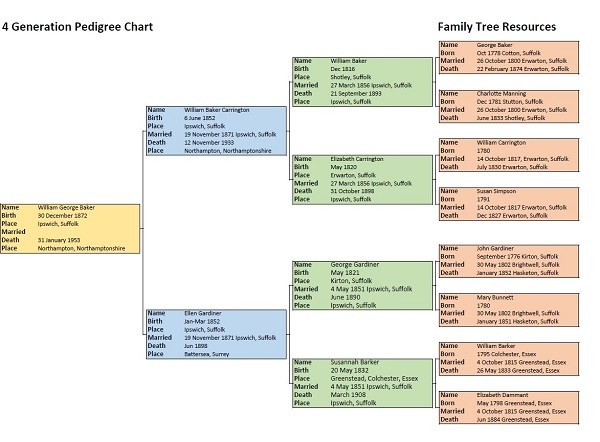
The system I use when organising my genealogy research is to have a ‘file’ for each ancestor, starting off with a family group sheet, descendant report, then vital records such as birth, marriage and death certificates, finally following on with census returns, military records and wills.
I then place information about my ancestor’s wife during the years of their marriage, and then finally their children, repeating the process for my direct line. If you follow this pattern, however, you may find that you have numerous files by the time you have finished!!
Your file could also be organised alphabetically or by the number you have allocated to each ancestor – how you choose to begin organising your genealogy research is just a matter of discovering which process works best for you.
Using an alphabetical system could be problematic, however, because you could find that several of your ancestors have the same name, making it that much more difficult to distinguish between them.
If you would like to make a family tree album, please read my article: make a family tree album
If you choose to allocate a number to each ancestor, you could place a list in the front of your file, adding more numbers as you find your ancestors. It may be best to start with yourself as number 1, and then work backwards allocating your parents numbers 2 and 3, your grandparents 4, 5, 6 and 7 and so on.
This will make it easier to allocate your ancestors numbers as you find them. If you find you do not have some information about your ancestors, do not worry; you can always add them in at a later date by leaving that number blank to be filled in later.
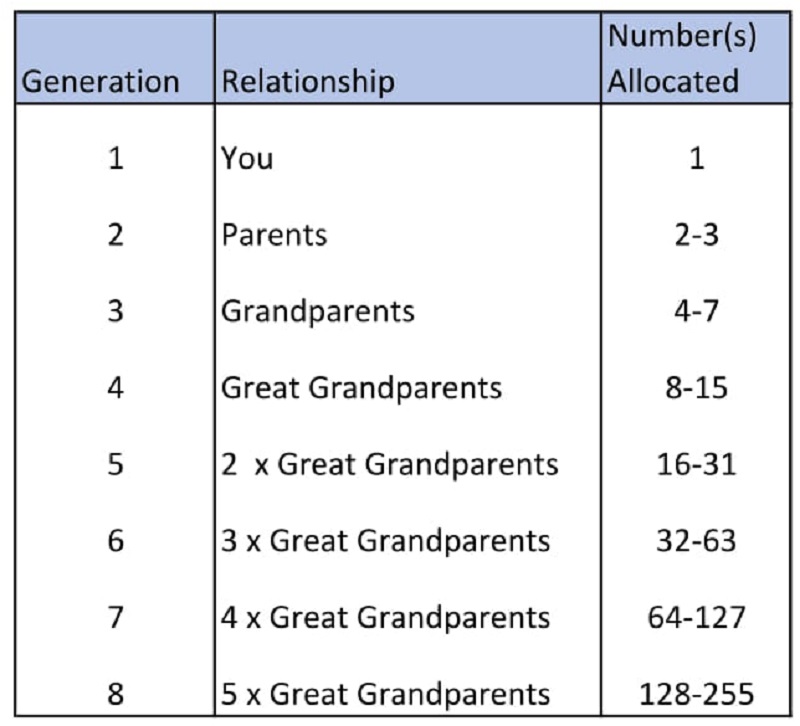
If you wish to include the siblings of your direct ancestors, you could issue each of them a number and a letter, such as 2a, 2b etc for your male ancestors siblings, and 3a, 3b etc for your female ancestors brothers and sisters.
Each male ancestor is allocated an even number, and each female ancestor is allocated an odd number.
Using a Card Index System For Recording Family History
A card index system can also be useful when recording family history because you can use a card for each ancestor you discover detailing key events in their lives, allocating each ancestor and their siblings the same number as described above.
You could also include cross references to other important documents so they are easier to access.
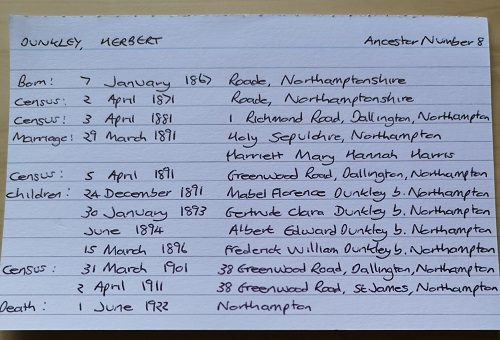
One thing I have learnt over the years is that family history files can take up a lot of space!! If space is a concern, you may be better off storing your files on your computer.
Using a computer software program when recording family history
If you do not have the necessary space to have paper copies of all your information, but still wish to organise your research, using your computer is probably the best way to accomplish this.
Using a computer software program such as Microsoft Excel to enter each relative as you find them is a good idea, but it is best to allocate each person the same number as in your paper files (if you have them) so you know where to find your information quickly and easily.
If you wish to have a copy of all your documents on your computer, it is prudent to use the same filing system that you use for your paper copies if you have them, so that information is easy to find in both places.
It is best to keep this filing system as simple as possible, such as avoiding having too many sub-folders in each folder.
When you are choosing the names for your folders, it is best to keep the same system in place throughout. For example, if you place the surname first, such as Dunkley, John, it would be better to keep using the same system as you find more relatives and add more folders accordingly.
I normally have sub-folders as follows:
- Birth, Marriage and Death
- Parish Register Entries
- Census Returns
- Military Records
- Wills
Another way of organising your genealogy research is to use family tree software, of which there are many different programs available.
You can also plan all your genealogy research to make that research as efficient as possible. To read more about research plans and how to make them, please read my article: how to create a genealogy research plan.
For more information about organising family history files on your computer, please read my article: how to organise your family history files.
Keep all your genealogical information together
It may appear clear, but it is best to keep all your genealogical information together when recording family history, and not to have it in many different places around the house. This way you will always know where all your information is stored.
Whichever way you choose to begin recording family history, organising your information using a paper filing system or computer software program is prudent so that you can can transport all your relevant information when you take a research trip to a record office that much more effortlessly.
Coordinating your files also makes it that much easier to spot gaps in your research so you know where to look in the future, and do not repeat research you have already done. With this in mind, you should always document your sources.
Dealing with, and documenting, sources
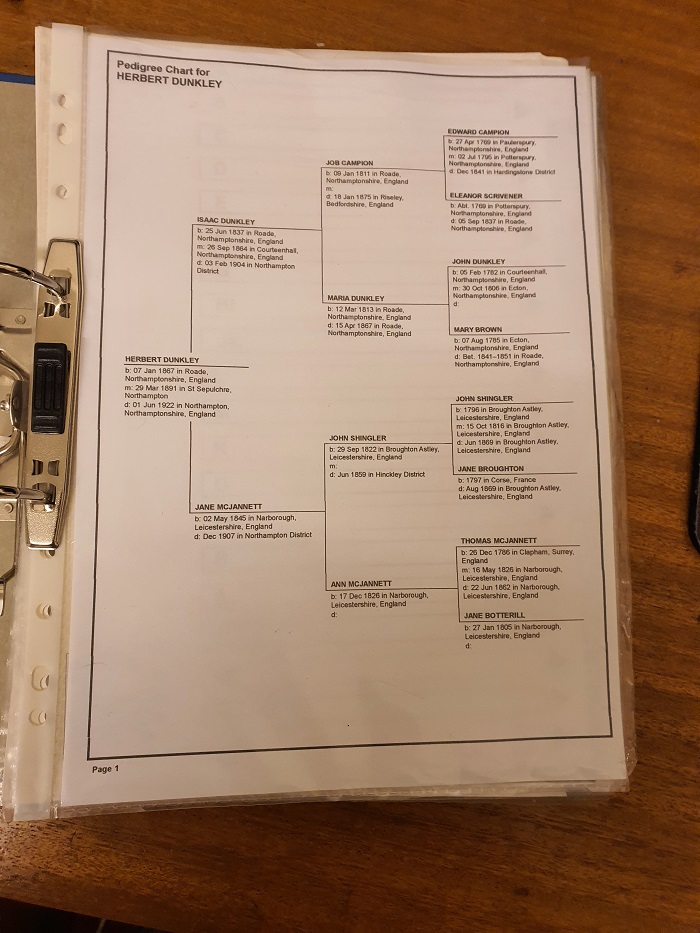
You should always remember that if you have collected the information contained on your tree from a specific source, you should always include full details of this source for future reference, including the title of the source, its location, and when and where you obtained the information.
I have created a research log you can use for this purpose. It is always prudent to have separate research logs for each family you are researching to avoid confusion.
Keeping a note of all your sources might be a time-consuming process, but it will save time in the future because you will know precisely where you have found each piece of information.
Using this system will make it that much easier to explain to third parties where your information originated, and for you to find the document again should you need to.
You should also make a note of where a specific document is located in your collection.
It is always prudent to take a photocopy of each source you look at, adding how you obtained the copy. This will make it easier to transfer the information from the source to your own records, and to see clues in the source you may have missed when looking at the original.
For more information regarding how to use a research log to its full potential, please view my page – genealogy research log and its use in family history research.
Look at the Original Source Where Possible
You should always attempt to look at the original source if you can, because you may find that some alterations have been made that have been missed from the copy for some reason, especially if it has been transcribed rather than being photocopied.
It is always better to take a photocopy of a source than write it out by hand because transcription errors may be made while transcribing. If you are using the document for personal use, you may make copies of any source useful to your research, but cannot take a copy of a whole book.
It was stated on the family tree that my direct ancestor was Sarah Ann Collis, who had married George Hunt on 26 December 1854 in All Saints, Northampton.
Research revealed that my direct ancestor was in fact her sister Harriett who had married Alfred George Harris on 8 November 1864 in All Saints, Northampton.
This was proved by obtaining the marriage certificate, showing the importance of always double checking any information given to you.
This is especially important when perusing online family trees as these trees do not always include source citations, which are used to state where the information originated.
It would be wise not to add these details to your tree until you can substantiate them using the appropriate sources.
Write Down Different Surname Spellings You have Looked For
If you have looked for differing spellings of a surname such as Minton, Mintorn or Minter etc it is best to write this information down to save you from looking for the same information again.
If you ever hit a brick wall during your genealogical research, and are unsure of the best way to proceed, please read my article: 21 genealogy research tips to help you find your ancestors.
Online Family Trees
Some people use an online family tree when recording family history, and make it publicly accessible because they wish to share their research with others. Some people, however, have made their tree private, and you must contact them for permission to peruse their tree.
Please remember that if you choose to publish your family tree online, living individuals must have their identities protected because of data protection and privacy laws.
If you find a family tree online, you should validate the information you find before adding anyone to your own family tree. To discover more about the perils of using online trees and how to avoid making mistakes with your research, please read my article: are family trees accurate?
Another great way to document your research is by scrapbooking your family history photos and information.
Would you like your own Family History Film?
Something that you could leave as a legacy to your children or grandchildren?
Or perhaps it could be a unique gift for someone special in your life – a parent or partner’s birthday, or a landmark wedding anniversary?
Well now you can. Family History Films offer this unique bespoke service. Click the link to find out more and to arrange your free consultation and be sure to mention that you found them through Family Tree Resources (please use code FTResources). You can also watch a video testimonial from a previous client.
